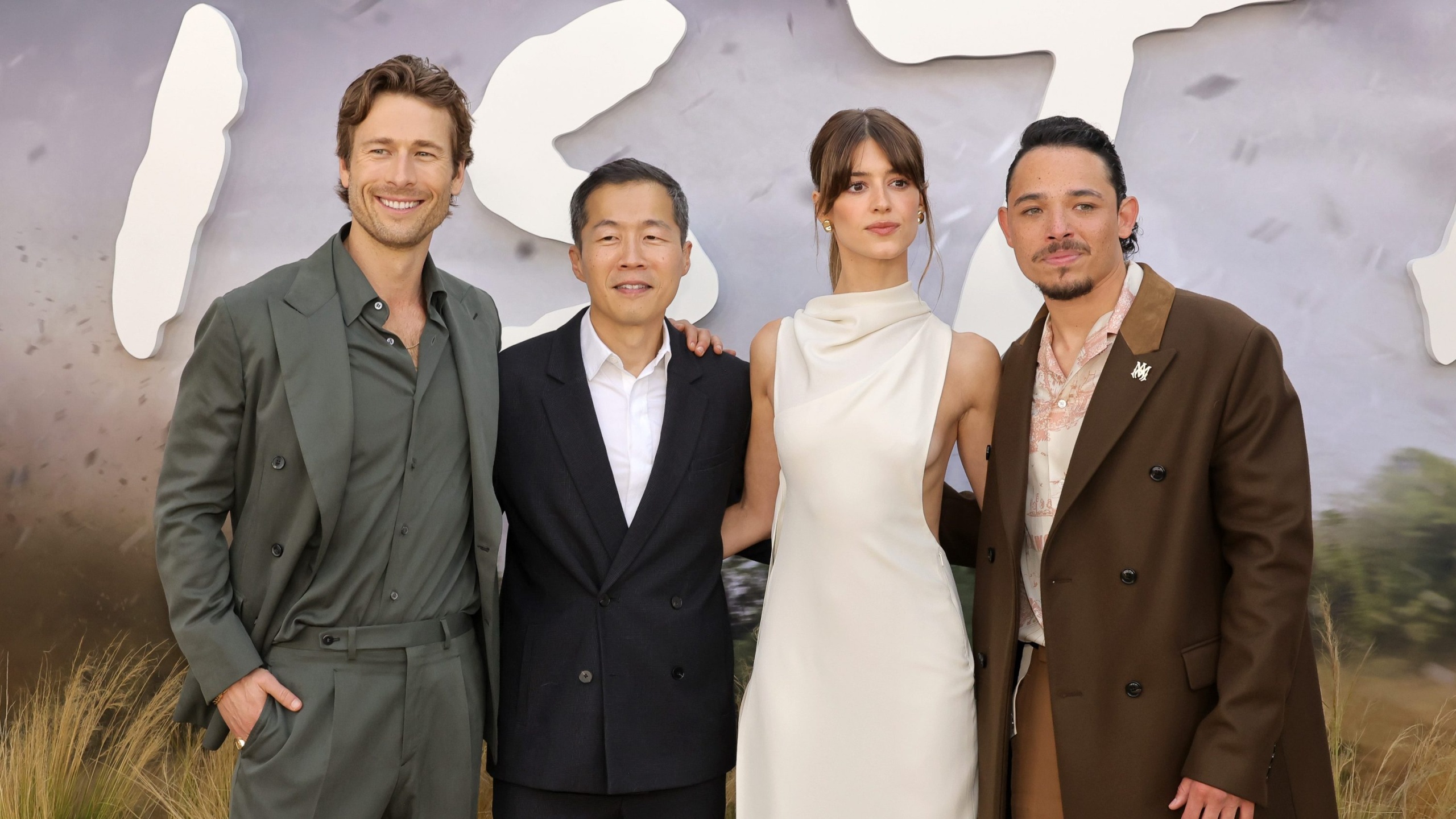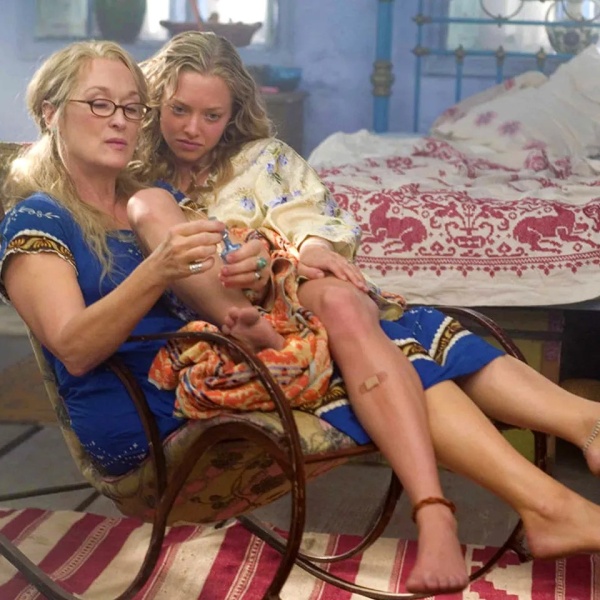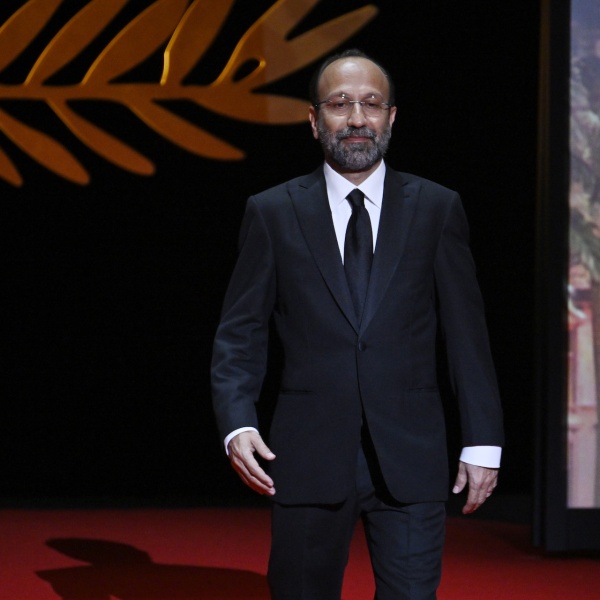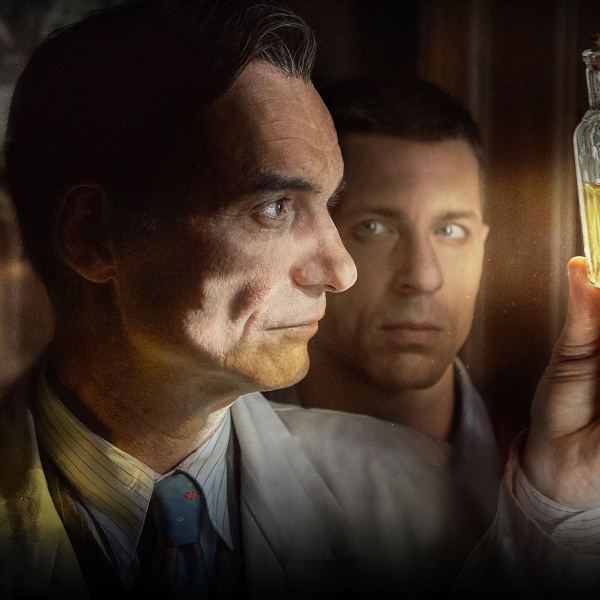Watching an actual barn burn to the ground while filming “Minari,” Lee Isaac Chung knew he wanted to make a disaster movie.
The Academy Award-nominated filmmaker behind that bittersweet and semiautobiographical portrait of South Korean immigrant life in rural Arkansas is now the director of “Twisters” — not a reboot, not a sequel, but an expansion of the world built (and destroyed) by the 1996 tornado blockbuster. Here, a team of science-loving storm chasers led by Daisy Edgar-Jones and Anthony Ramos become rivals to a group of scrappier thriller seekers led by Glen Powell in this summer’s ultimate blockbuster spectacle — and its most forceful argument for the importance of the big-screen experience.
But back to that barn-burning that so intoxicated its director. In “Minari,” Jacob (Steven Yeun) watches his flames engulf his barn after his mother-in-law (Yuh-Jung Young) sets fire to it. Filming that moment was a high Chung has been chasing ever since, just as doggedly as one of the storm chasers in “Twisters.” A practical approach to those effects, involving a controlled burning of the barn itself, inspired at least two of Chung’s non-negotiables entering the world of “Twister” IP: shooting on location in Oklahoma, and a balance of practical effects with the CGI needed for the $200 million sequel.
“I’m very hard on myself as a filmmaker,” Chung told IndieWire in a recent interview to discuss “Twisters,” his first feature and second project post-“Minari” after directing an episode of the Star Wars series “The Mandalorian.”
“When I worked on the Lucasfilm projects [with ‘Skeleton Crew’ upcoming], I felt like there was a real learning curve I was going through. Those shows are very VFX-heavy, so in many ways, I was learning [how] what ends up looking great and what would cause me to wish I could redo later. More often than not, the shots that really excite me were always the ones that had many more practical effects in them,” he said. “The ultimate anchor for me was the shot I did in ‘Minari’ of the barn going up in flames, which was completely practical. It was much bigger than I had anticipated. And it just simply holds up because it’s real, the fact that we built that thing and let it go. I’ve been chasing after that quite a lot now.”

But what “Twisters” studio Universal Pictures and Amblin co-producers were not chasing from the Cannes-winning director of humanist dramas like the Rwandan genocide portrait “Munyurangabo” was a repeat of Jan de Bont’s 1996 film. Nor were stakeholders ultimately interested in a pitch from one of the original’s stars, Helen Hunt, about a diverse “all Black and brown” group of storm chasers, which they passed on, according to the actor.
Lee Isaac Chung hasn’t spoken with Hunt (whom he calls a “genius”) or de Bont (who recently claimed he hadn’t heard of “Twisters” until the trailer hit).
“I don’t know what [Hunt’s] version was, and unfortunately, I have not been able to talk to her nor Jan de Bont nor to anyone from the cast about the movie,” Chung said. “We have a few people who worked on the original in our crew. When I read the script [by Mark L. Smith with a story by Joseph Kosinski], I really loved the approach they were taking with it, that it was going to be a new story, with new characters and an entirely new science project … I really believe Helen Hunt is a genius, and I would have loved to work with her. That choice was just never a part of me coming on board with this, however.”
Chung’s unexpected move from “Minari” into “Twisters” turned a few heads: Why pivot into IP so quickly after Oscar success with an original, personal project? Well, “Twisters” is still personal, as the second-generation South Korean-American filmmaker grew up in Arkansas, after all, in the eye of tornado alley. But Chung was aware of public wariness over his seemingly sudden shift into franchise territory.
“My sister is very good about letting me know what people are saying,” he said. “There was some kind of meme. James Cameron, when he was pitching ‘Aliens,’ he did a dollar sign at the end, and put ‘Alien$’ with a dollar sign. People were saying that. Different family members had been asking me, ‘When you pitched for this project, did you put a dollar sign after “Twister”?’ I have to tell them I did not do such a thing. I wasn’t aware of it before when I jumped onto this film, but there were some friends in the business who were giving me advice, and they said, ‘People are going to think that this is weird,’ and they were advising me, ‘Forget about all that. If you really want to do this, go for it.’”
Chung added, “I would love to burst whatever image people have of me that I wouldn’t do something like this.”
Like many who grew up in unpredictably climate-ravaged places like Oklahoma (where “Twisters” and “Twister” both shot on location. per their directors) or Arkansas, Chung never actually saw a tornado with his own eyes, instead only hearing them from the safety of shelters.

“I had a similar experience of having to hide away and run from one but … by the time I was in high school, I can’t even recall the tornado alarms, the sirens and all those things, because it just ends up becoming part of the nature of life there,” Chung said. “It’s kind of like fire in Southern California. These things are happening, but on a day-to-day level, you know about it, you’re aware of it, but it’s not causing you to live in panic.”
Post-“Minari,” pre-“Twisters” head turns aside, filming on location in Oklahoma did imbue the film with an independent spirit, as Chung’s request took a bite out of the number of shooting days.
“I took on the mentality that, in many ways, some of the scenes we would be filming, we’d just go onto a location and be very loose in the way we filmed scenes and react to what we find on location,” Chung said. “I felt like it was going to speed up our timeline more than people were realizing … if we were trying to mimic Oklahoma, then the magic trick of letting that actually happen would end up causing us to spend more time than simply being at the location. If we were filming in Georgia, we’d have to find spots where we’d point the camera only in two directions where there’s a clear skyline or horizon. Or we’d have to fill in quite a lot in VFX, which budgetarily has its own issues. It was a bit of a gamble, and as we got into it, we were definitely proving that it was speeding up our production and helping us with the budget.”
In keeping with the pivotal barn-burning on “Minari” that inspired him in the first place, Chung also introduced tangible, tactile storytelling into the necessary CGI foundation of “Twisters.” “I think of it in terms of layers, where the ultimate layer, the background layer, is going to the tornado within any frame, and that I knew had to be CGI because there is no way to actually capture one in the moment,” Chung said. But “all the layers in between the tornado and the actors and the camera … needed to be as practical as possible. What makes that background layer feel real is what it’s doing to very tangible things in the foreground. Often, those little things, those details in the foreground, are those things that make the background feel real.”
Chung said, “That meant throwing a lot of stuff at the actors. That meant little, odd details that we were introducing, such as the way a Coke machine drags across a pool, little things we were doing to make you feel immersed in this grand space where this crazy thing is right here coming at you.”

One image destined to be remembered involves characters taking shelter in a movie theater during what feels like an apocalyptic storm. Cyclonic winds rip the silver screen out from the theater’s wall, leaving a screen-shaped hole to the destructive outside world. Chung was delighted by the metaphoric possibilities of this sequence at a time of great instability for theaters and by how it could make moviegoers suddenly aware of themselves.
“From the start, the design of that theater, and the size of the screen, and the special effects, and the stunts happening in that sequence, I had in mind that people would be sitting in their seats watching this thing happen,” Chung said. And sending out a rallying cry for the necessity of theaters was part of his raison d’être in making the movie at all.
“With my own life, I found that I was spending so much time looking at small screens, and that was making my mind smaller,” Chung said. “There’s something about shared experiences of things that are much bigger than us that I feel opens our minds quite a lot. I was thinking about those issues and how the movie theater experience is quite a wonderful art form we have as people, and how much more we need to invest in the art form of creating awe for people. When ‘Twisters’ the script landed in my inbox, it was checking off every box I was already thinking about. … Now that I was working at a level much bigger than ‘Minari,’ I knew there were many jobs counting on the movie, the success of the film, and I knew that theater-going itself, there was some fragility there. Those thoughts came into my mind a lot, and that goes into the theater scene at the end of this film. I did channel some of those thoughts into that sequence.”
He added, “We as filmmakers have a responsibility to prove why this art form is good and meant to be protected. I’m going to be working really hard to do that.”
“Twisters” opens in theaters on Friday, July 19.





